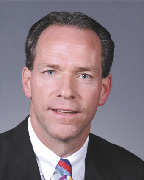The naysayers were wrong - green building is not just a fad but a strong movement that will continue to strengthen over time. Government and business leaders have taken notice of this emerging trend and have demonstrated significant leadership because of the clear benefits to building green. Leaders in the construction industry have also become more conscious of these benefits than ever before. In a recent report, McGraw-Hill Construction forecasted that the green building market is predicted to be worth between $10.2 billion and $20.5 billion by 2010. The report also said that 86% of the architecture, engineering and construction community currently participates in green building activities. As economic uncertainty spreads throughout the region, it is critical that we, as industry leaders, accept the challenges and continue to push the green agenda forward.
Navigating Green Building Through Strong Partnerships
Building architects, designers and engineers have led the green movement for some time simply because most components of the LEED process revolve around design decisions. But general contractors can also play an integral role in the process by executing new construction methods, raising the bar on recycling efforts, closely documenting LEED compliance throughout the construction process and assisting project teams in finding creative ways to reach and exceed clients' green building goals.
We can also play a critical role by educating others about the green building movement and the LEED-certification process. Often times when construction professionals hear that a project is trying to achieve LEED certification, they immediately assume the project will be more expensive than more traditional projects. But the fact is that materials and labor do not have to be more expensive for LEED-certified buildings. The key is to integrate materials and labor into the design early, and involve the subcontractors, architects, engineers and general contractors from the very beginning of the process during the design phase and material selection. As general contractors and subcontractors, we must be responsible for closely tracking and understanding the industry trends that drive the costs of materials and labor so that we can provide valuable counsel to our clients and design partners long before the first shovel hits the ground.
As we all become more familiar with the intricacies of green building design and the requirements necessary to deliver quality-driven, environmentally friendly buildings, our partnerships and lines of communication will strengthen, resulting in more creative thinking and problem solving that will help raise the bar for future green buildings and collaborations, which will then spur more green building activity and investment.
Training the Future
Specialized employee training around green design will be critical - everyone from developers and architects to general contractors and subcontractors must become involved. Last year, Suffolk launched a LEED training program to educate our workforce about the principles of green building. This program is unique because it is offered to construction professionals and non-operational employees alike. All employees that participate in the training are taught new ways to approach building design and sustainable building practices through team work and collaboration, while Suffolk field employees learn about the green building materials necessary to incorporate in their actual building projects.
Not surprisingly, Suffolk's youngest workers and new hires are most energized and excited about green building and are anxious to learn more. They are practically demanding LEED training, and their passion and willingness to start a career in construction is an especially encouraging sign, particularly as many baby boomers in the construction industry retire. In the years ahead, green building can be a magnet that attracts more young people into our industry. As industry leaders, we need to be ready to welcome and retain these young people by leveraging training and employee development programs that encourage more creative green building methods and collaboration with partners in the LEED process.
It's safe to say that green buildings are here to stay, so real estate and construction companies must continue to look for ways to become directly involved in the movement. I encourage you to explore green technology options in your own work facilities. Create internal recycling campaigns. Build partnerships with other firms to develop unique green ideas. Simply raising awareness of the benefits of green building will be an important first step in this grassroots campaign that is steadily spreading across our entire industry. The result will be stronger working partnerships, a well-trained workforce of the future, and environmentally-friendly buildings that will benefit everyone in our communities.
John Fish is the president of Suffolk Construction, Boston.
Tags:
Accepting the green challenge: It's here to stay, so you should become involved in the movement
March 26, 2008 - Spotlights









.png)